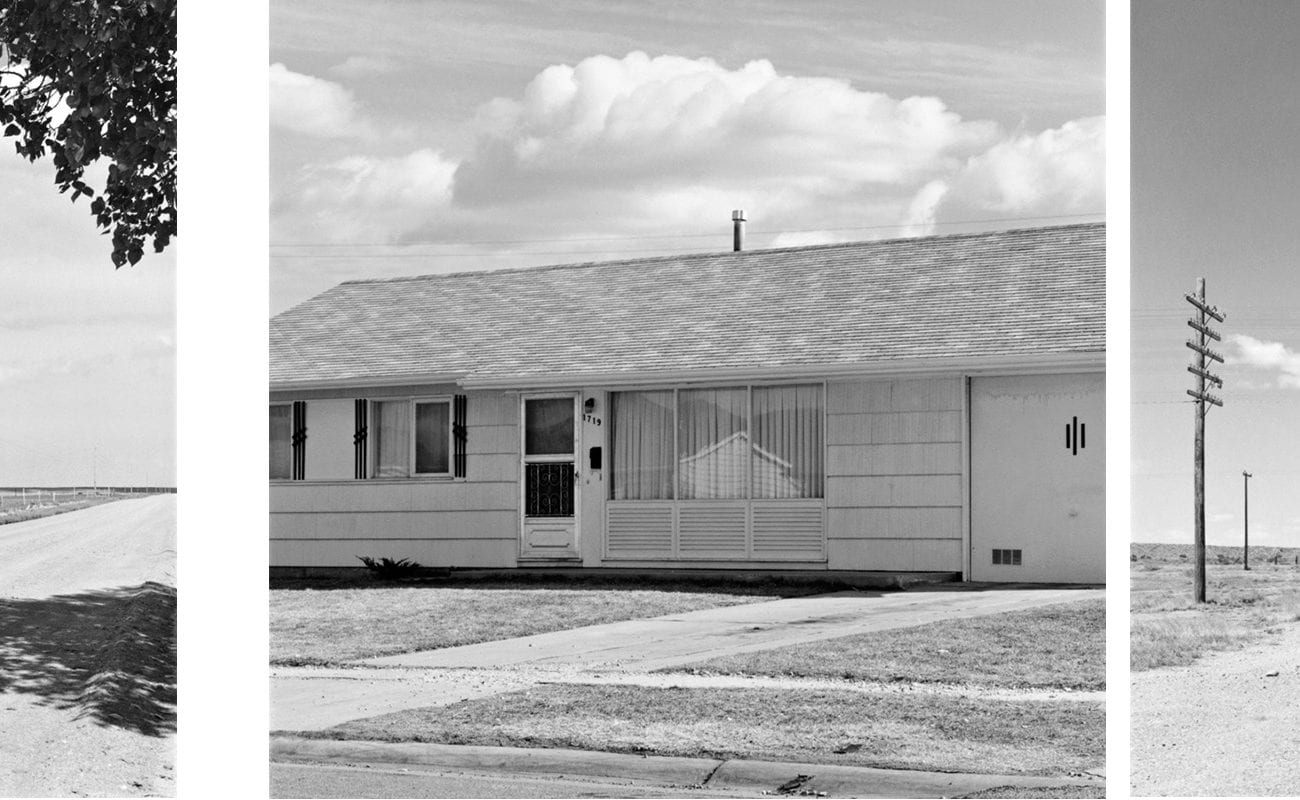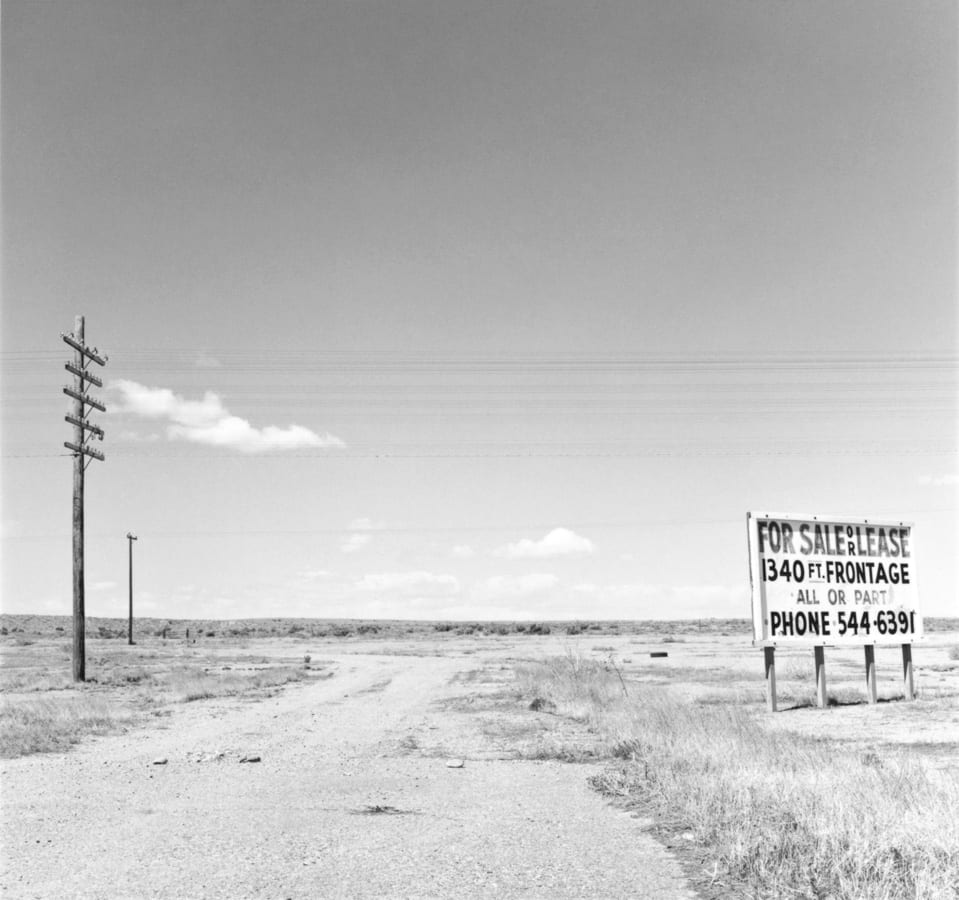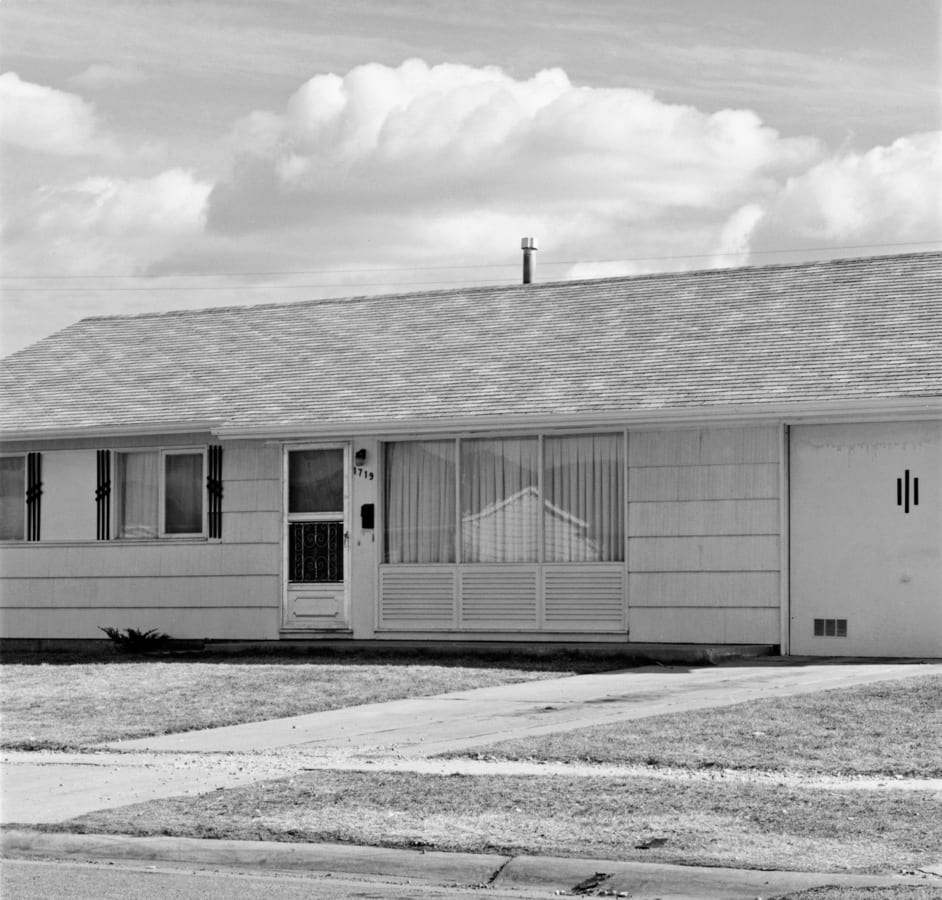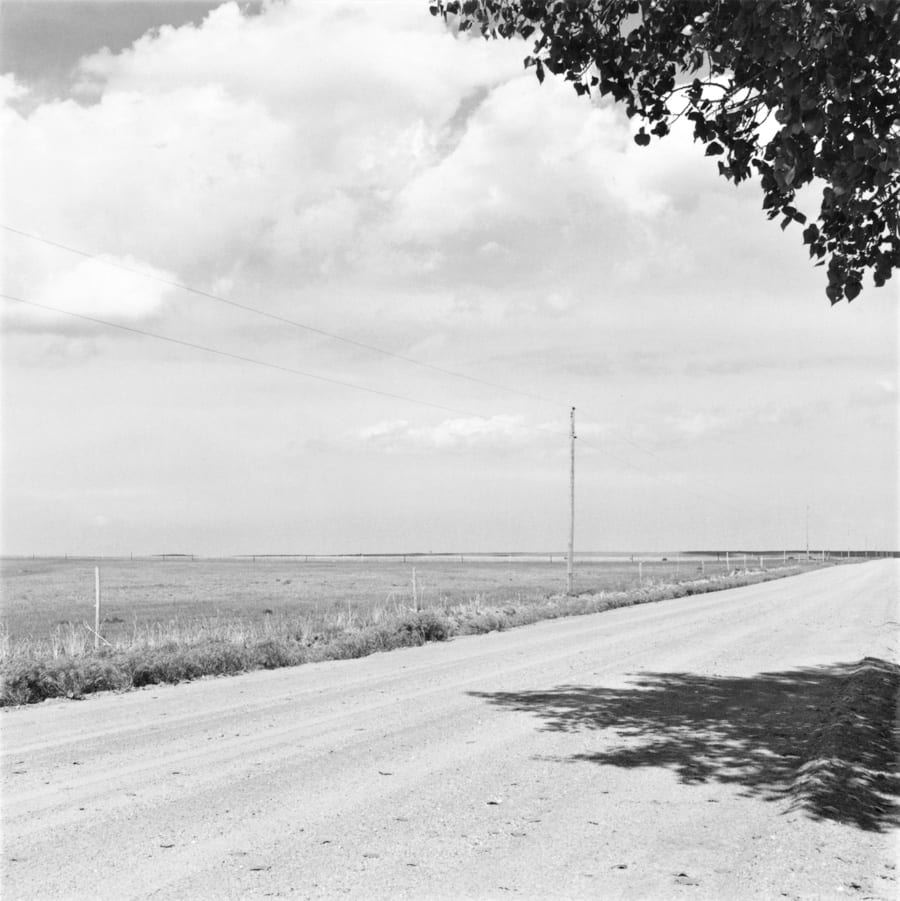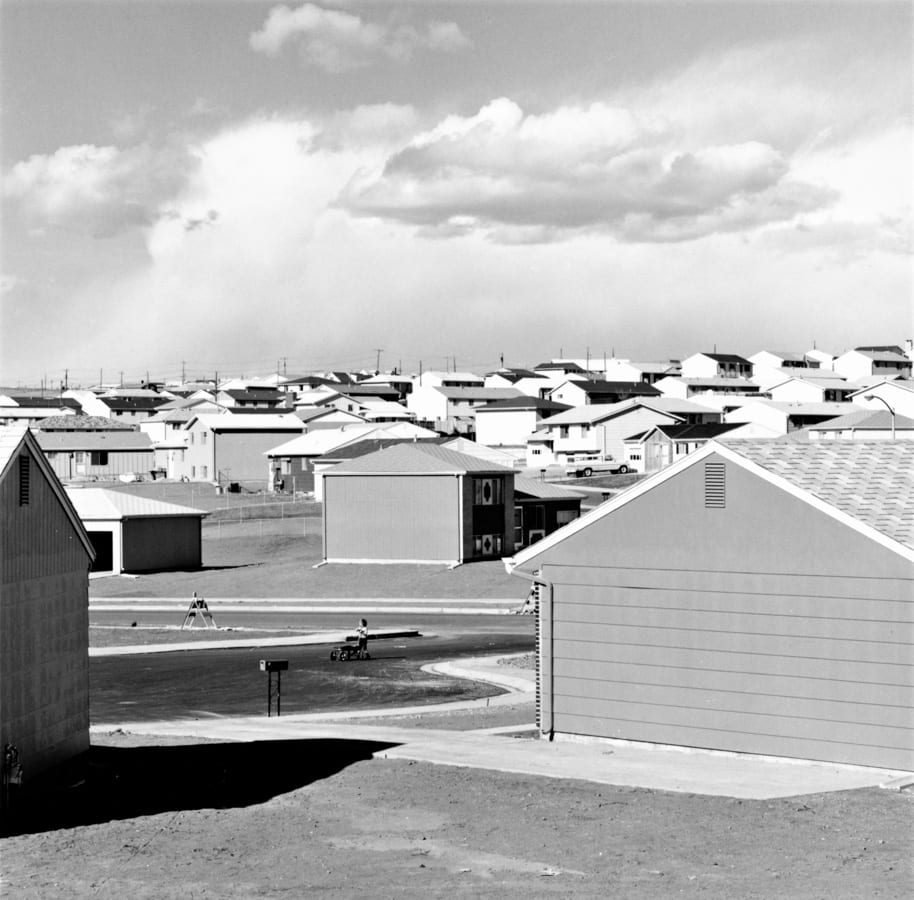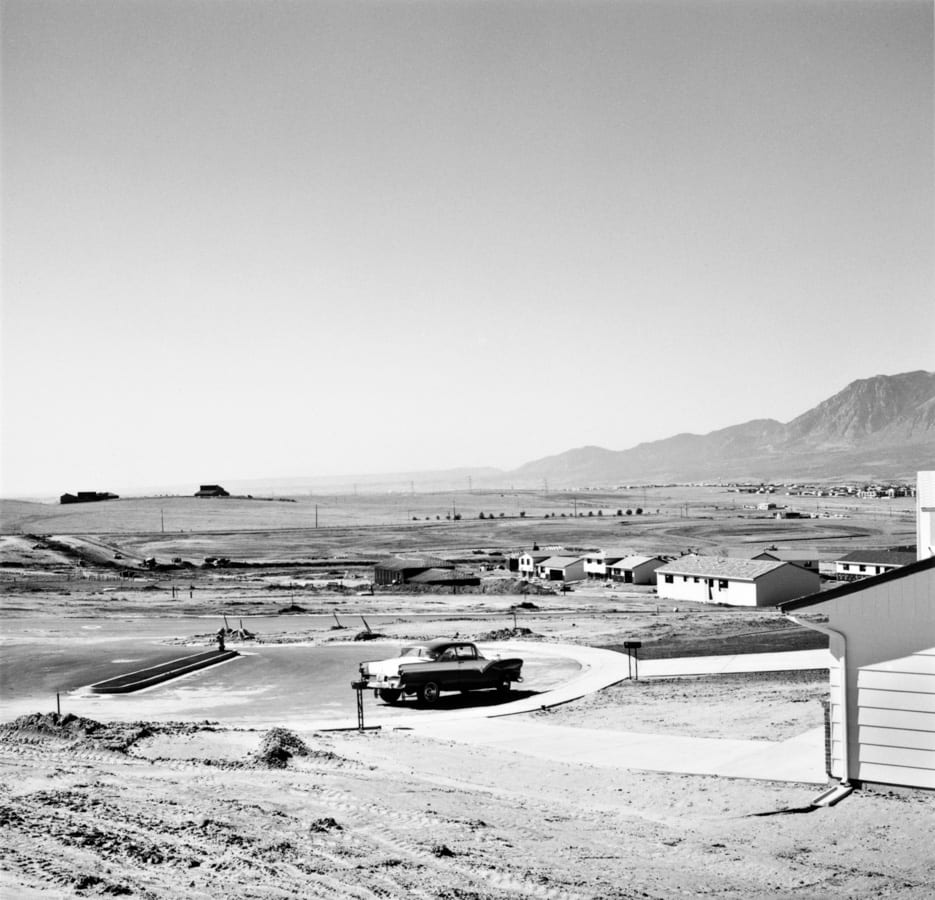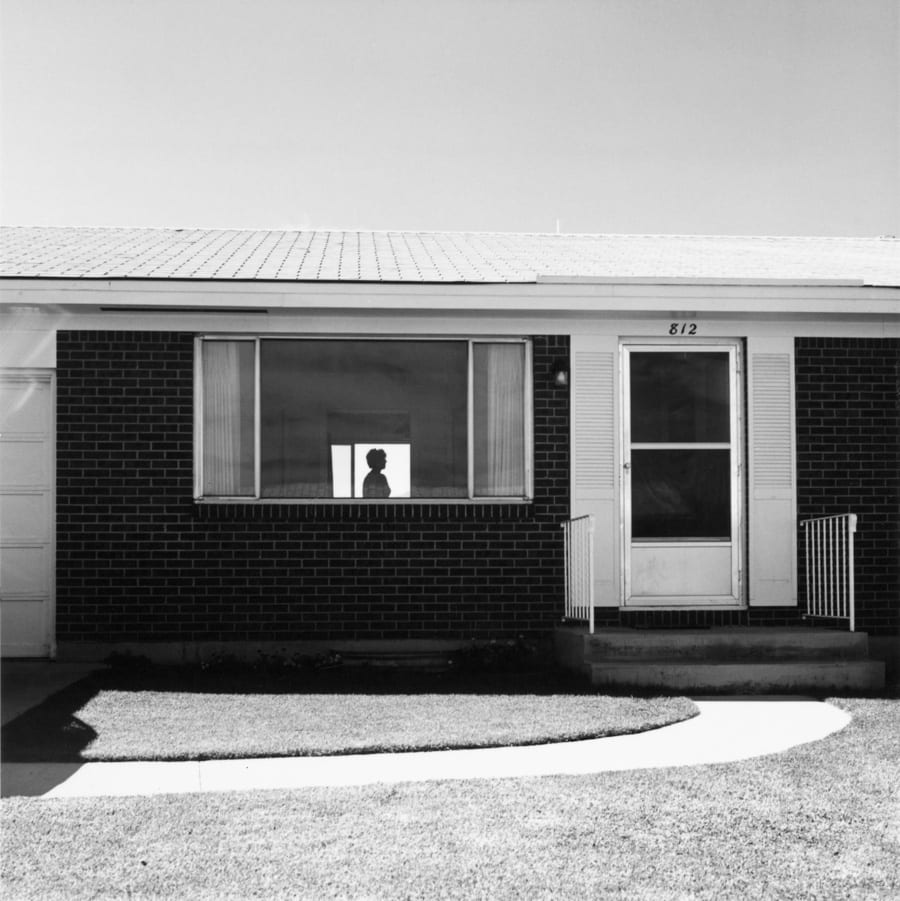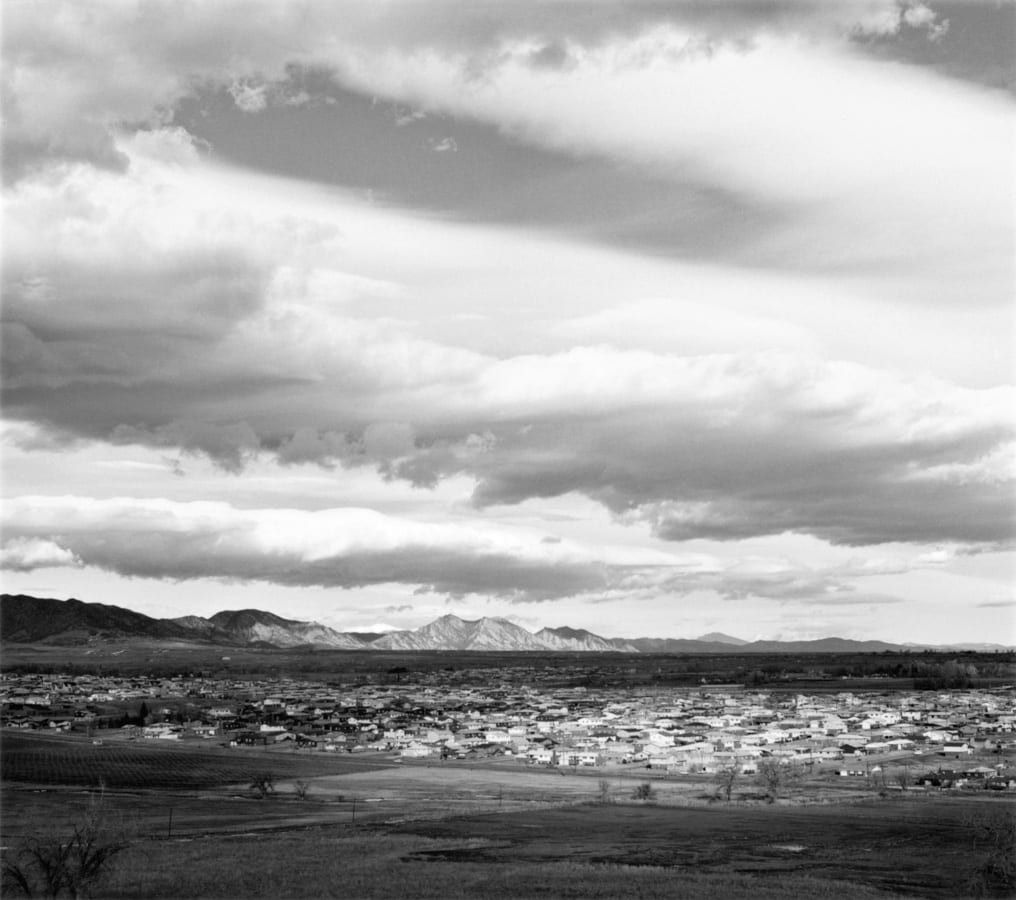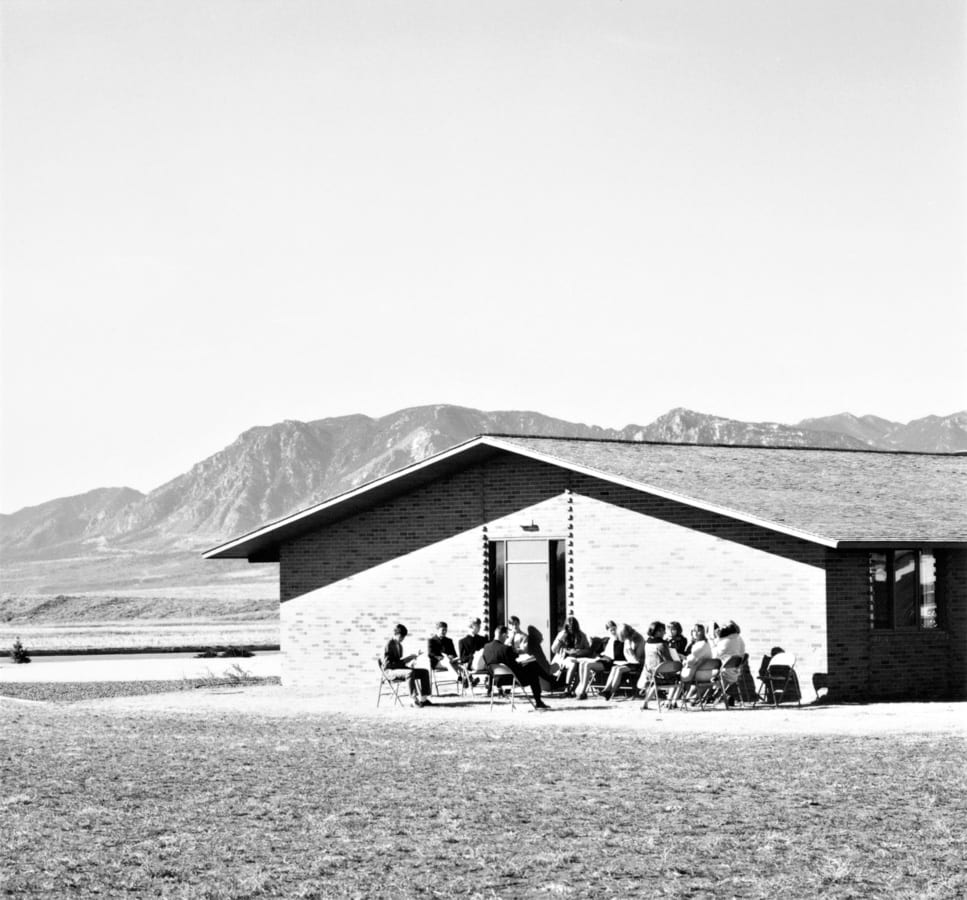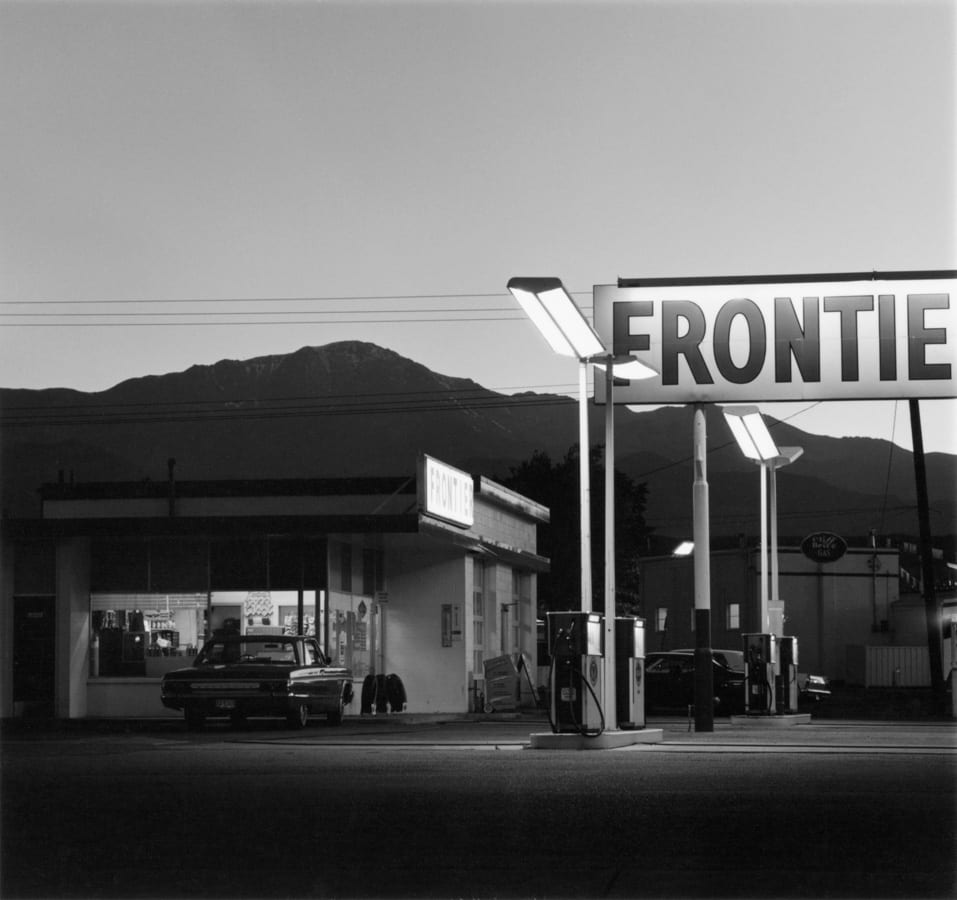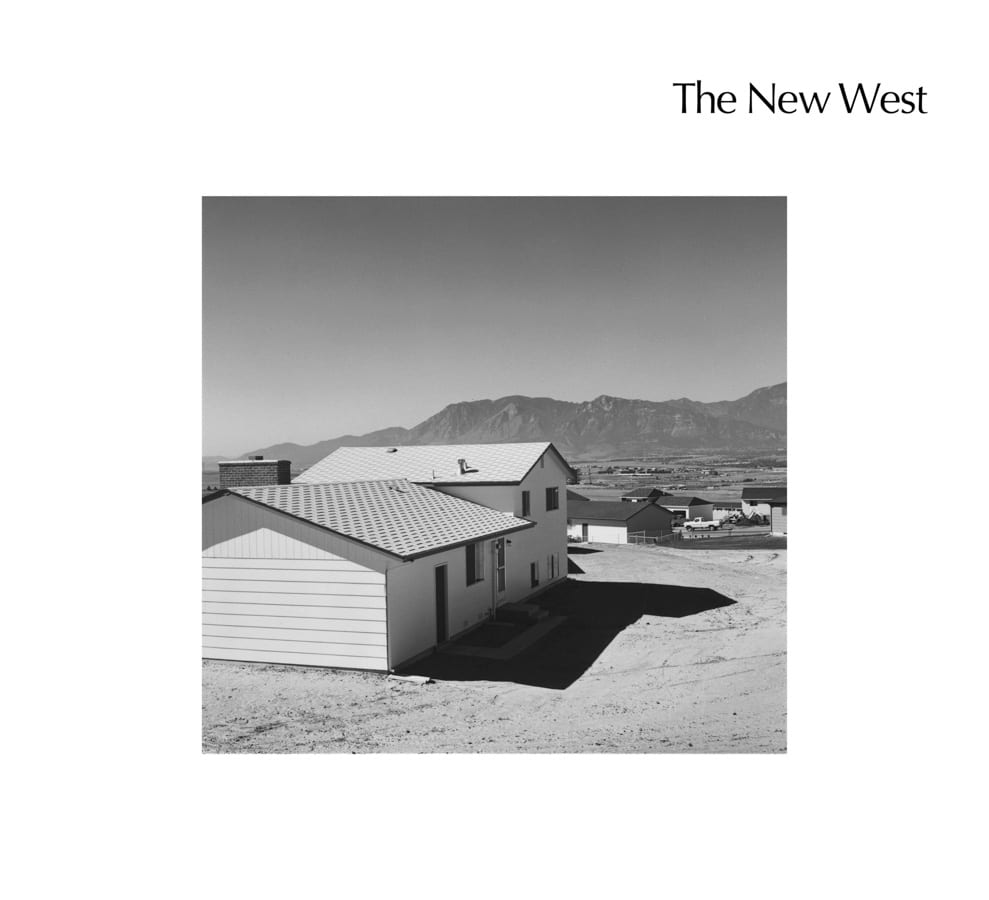‘Surrounded by mature trees, adapted and personalised by successive owners, the anonymity and loneliness that Adams perceived in these tract homes have been tempered by the years that have passed since they were built.’
The house that occupies the plot on the corner of South Murray Boulevard and Darwin Place in Colorado Springs is neatly kept but otherwise undistinguished. It’s an odd colour, a cross between the oatmeal shade of an old computer and the tan of a woman’s shoe. It sits in a patchy rectangle of lawn – the owners obviously don’t go in for gardening – and apart from the bright red front door, it looks like it’s trying to disappear into the landscape.
Robert Adams photographed this house in 1969 as part of his photographic essay The New West, which was published in 1974. ‘Frame for a tract house, Colorado Springs’ sets the outline of a half-built home against a vast, empty landscape. The hills in the distance are just visible between the uprights and joists of the flimsy structure. ‘Few of these new houses will stand in fifty years’, Adams wrote at the time, ‘linoleum buckles on counter tops, and unseasoned lumber twists walls out of plumb before the first occupants arrive.’
EXPLORE ALL STEIDL ON ASX
But 241 South Murray Boulevard is still standing, as are most of its neighbours. Surrounded by mature trees, adapted and personalised by successive owners, the anonymity and loneliness that Adams perceived in these tract homes have been tempered by the years that have passed since they were built. The new suburbs that he photographed have long since been absorbed by the city, and the empty landscape that surrounded them has filled up with playgrounds, shopping malls, schools, and churches. It looks like a pleasant enough – if unexciting – place to live.
‘More than four decades have passed since Adams first turned his camera on the development that threatened the American west; today, the extent of our interference with the environment is measured on a planetary scale.’
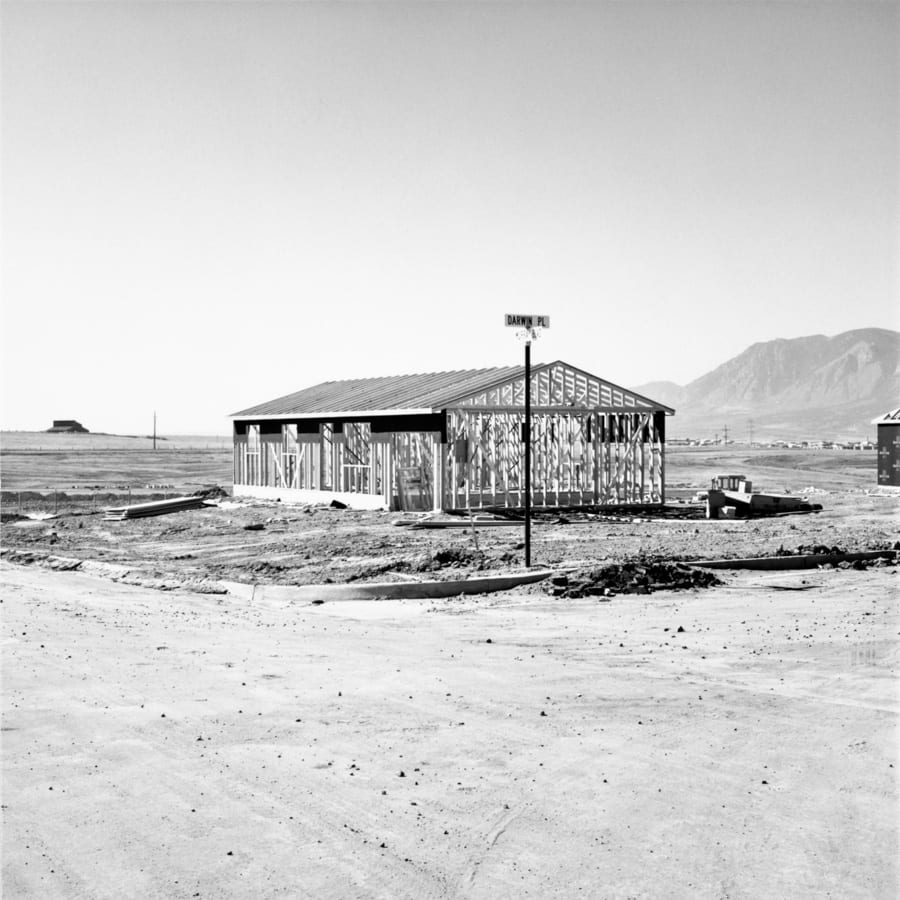
If Adams’ photographs condemned the new developments that crept outwards from the foothills of Colorado’s Rocky Mountains, he also believed that the land on which they were built had an enduring beauty that no human intervention could erase. John Szarkowski shared this conviction in his introduction to The New West, where he urged viewers to do as Adams himself had done, and ‘[discover] in these dumb and artless agglomerations of boring buildings the suggestion of redeeming virtue.’ Adams never intended his images to act as a panacea for the issues they depicted. Szarkowski, however, seemed to suggest that the photograph could somehow lead Americans towards a new relationship with the land by showing them how to look at it in a different way.
Steidl’s new edition of Robert Adams’ The New West – released to mark the 40th anniversary of the original publication – is a timely reminder of how insidious this sort of aesthetic remediation has become. More than four decades have passed since Adams first turned his camera on the development that threatened the American west; today, the extent of our interference with the environment is measured on a planetary scale. And in place of Adams’ austere documents, recent landscape photography routinely turns to the monumental tableau or the full-colour abstraction as a way of describing environmental ruin. Many of the planet’s most poisoned sites now hide their secrets in plain sight. If Adams’ photographs still have the power to shock, it’s not the desolation of the places they depict, but how minor these depredations now seem, how meticulously Adams channelled his anger into his work, and how diffident a practice landscape photography has grown into since these pictures were made.
The New West
Robert Adams
Steidl
(All Rights Reserved. Text @ Eugenie Shinkle. Images @ Roberts Adams.)
